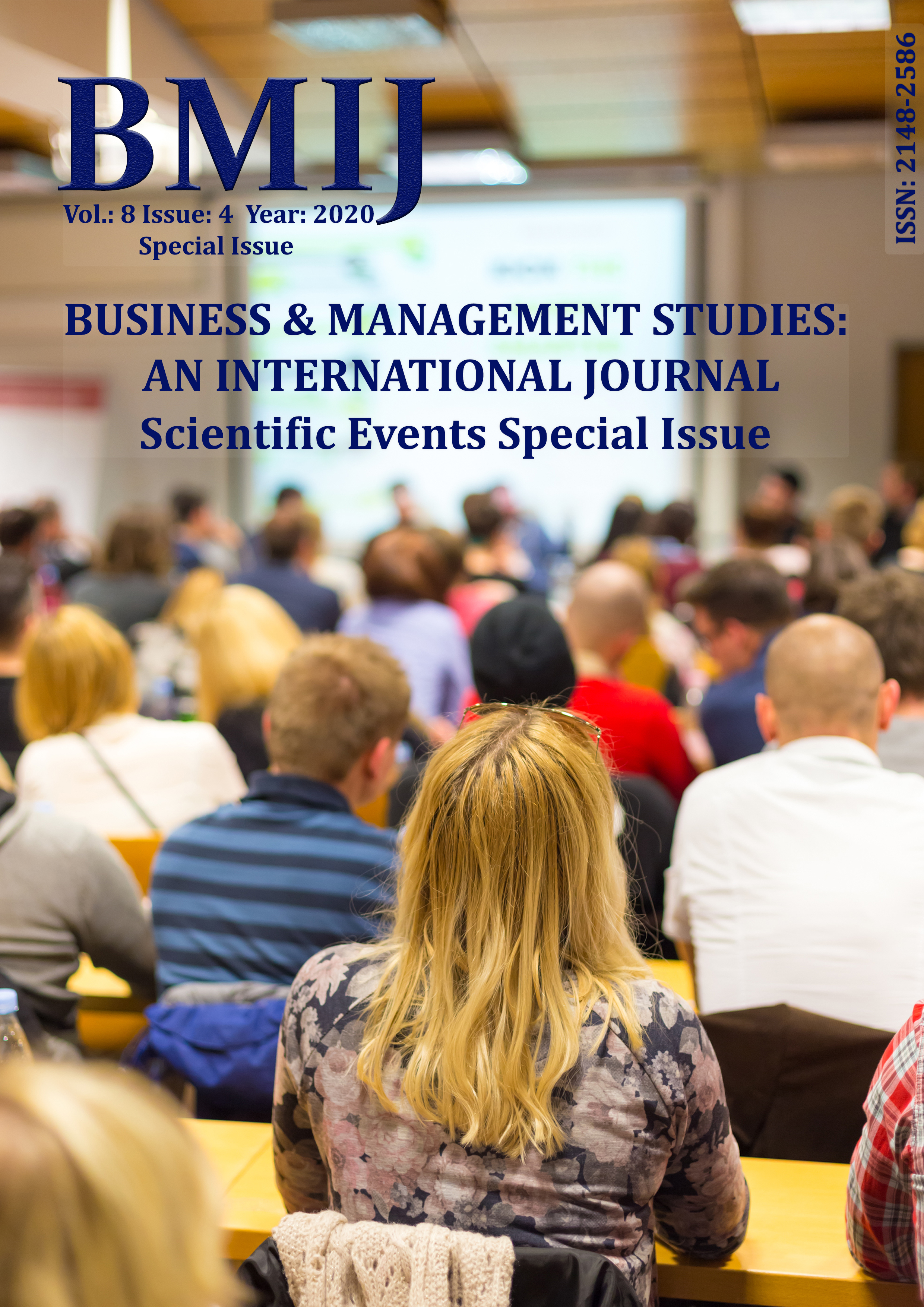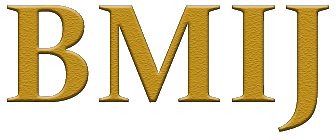GÜNEY EGE TERMAL TURİZM GELİŞİM BÖLGESİNİN TERMAL SAĞLIK TURİZMİ SEKTÖRÜNÜN REKABETÇİLİK DÜZEYİNİN VE REKABETÇİLİK FAKTÖRLERİNİN TESPİT EDİLMESİ

Yayınlanmış 10.12.2020
Sürüm
- 13.12.2020 (2)
- 10.12.2020 (1)
Anahtar Kelimeler
- Termal Sağlık Turizmi, Rekabetçilik, Güney Ege Termal Turizm Gelişim Bölgesi
- Thermal Health Tourism, Competitiveness, South Aegean Thermal Tourism Development Region
Nasıl Atıf Yapılır
Telif Hakkı (c) 2020 Business & Management Studies: An International Journal

Bu çalışma Creative Commons Attribution-NonCommercial-NoDerivatives 4.0 International License ile lisanslanmıştır.
Nasıl Atıf Yapılır
Öz
Bu çalışmanın amacı; Güney Ege Termal Turizm Gelişim Bölgesinin (İzmir, Manisa, Aydın ve Denizli) termal sağlık turizmi sektörünün rekabetçilik düzeyinin ve rekabetçilik faktörlerinin tespit edilmesidir. Öncelikle bölgenin termal sağlık turizmi sektörünün rekabetçilik düzeyleri tespit edilmiş, daha sonra termal sağlık turizmi sektörünün rekabetçilik faktörlerinin alt değişkenleri tanımlanmıştır. Nihayetinde ise bu rekabetçilik düzeyinin geliştirilmesi için önerilerde bulunulmuştur. Araştırmanın ana kütlesini İzmir, Manisa, Aydın ve Denizli illerinde faaliyet gösteren termal sağlık turizmi tesislerinin orta ve üst düzey yöneticileri oluşturmaktadır. Nicel araştırma yönteminin kullanıldığı araştırmada, veriler yüz yüze anket tekniği ile 400 yöneticiden toplanmıştır. Veriler SPSS ve AMOS paket programları aracılığıyla ile frekans analizleri, betimleyici istatistikler, açıklayıcı faktör analizi (AFA) ve doğrulayıcı faktör analizi (DFA) teknikleri kullanılarak yorumlanmıştır. Araştırmanın sonuçlarına göre; Güney Ege Termal Turizm Gelişim Bölgesinin Termal Sağlık Turizmi Sektörünün rekabetçilik seviyesi, elmas modeli ile yapılan analiz sonucu, orta seviyede tespit edilmiştir. Bu sonuca, incelenen dört ana değişken ve devletin sektörün rekabetçilik düzeyine yaptığı katkı düzeyleri dikkate alınarak ulaşılmıştır. Doğrulayıcı faktör analizleri yapılarak; termal sağlık turizmi sektörü rekabetçilik faktörlerin kabul edilebilir uyum indeksine sahip olduğu tespit edilmiştir. Araştırmanın değişkenleri için yapılan güvenilirlik analizinde, ölçeklerin yüksek güvenilirlik derecelerine sahip olduğu tespit edilmiştir.
Referanslar
Akbulut, G. (2010), Thermal Tourism and Problems in Turkey. Gaziantep University Journal of Social Sciences, 9 (1), 35-54.
Alsaç, F. (2010), Clustering Approach as a Tool for Regional Development and Clustering Support Model Proposal for Turkey, Planning Expertise Thesis, DPT, Ankara.
Aslan, Z. (1992), Development of Service Standards in Thermal Tourism Enterprises and Their Effects on Marketing Activities: Balcova Thermal Center Application, Dokuz Eylul University Institute of Social Sciences, Unpublished Master Thesis, Izmir.
Çetin, T. (2011), Nevşehir (Kozaklı) Hot Springs in Terms of Thermal Tourism Potential. Turkish Studies - International Periodical for the Languages, terature and History of Turkish or Turkic, 6 (1), 899-924.
Cho, D.S. (1999), From National Competitiveness to Bloc and Global Competitiveness, Competitiveness Review, 8 (1), 27-34.
Cohen, I.G. (2010), Medical tourism: The view from ten thousand feet. Hastings Center Report, 40 (2), 11-2.
Connell, J. (2006), Medical tourism: Sea, sun, sand and… surgery. Tourism management, 27 (6), 1093-100.
Dear, E. (2008). Clustering Approach and Turkey, magnifying Journal, Ankara Chamber of Industry Publications January-February 2008.
Donald, D.J. (1993), Porter’s Diamond and Exchange Rates, Management International Review; Second Quarter 1993, 33 (2).
Erdoğan, E. and Aklanoğlu, F. (2008), Thermal Tourism and Afyon- Gazlıgöl Example. e-Journal of New World Sciences Academy Natural and Applied Sciences, 3(1), A0053, 83-92.
Gawell, K. and Greenberg, G. (2007), “2007 Interim Report, Update on World Geothermal Development”, Geothermal Energy Association, May 1, http://www.geoenergy.org/publications/reports/GEA%20World%20Update%202007.pdf(Accession : 20.01.2020) .
Giritlioğlu, İ. (2012), Service Quality Expectations and Perceptions of Employees and Customers in Food and Beverage Departments: A Research in Thermal Hotels. Unpublished Doctoral Thesis, Balikesir University Institute of Social Sciences, Balikesir.
Grant, R.M. (1991), Porter’s' Competitive Advantage of Nations': An Assessment. Strategic Management Journal, 12 (7), 535-548.
Graspy, S.E. and Hutcheon, I. (2001), Controls on the Distribution of Thermal Springs in the Southern Canadian Cordillera, Canadian Journal of Earth Science, 38, 427-440.
Hodgetts, R.M. (1993), M. Porter’s Diamond Framework in A Mexican Context, Management International Review, 33(2), 41-54.
Huggins, R. and Izushi, H. (2015), The competitive advantage of nations: Origins and journey. Competitiveness Review, 25 (5), 458-470.
İlban, M.O., Köroğlu, A. and Bozok, D. (2008), Destination Image for Tourists Traveling for Thermal Tourism: Example of Gönen. Istanbul Commerce University Journal of Social Sciences, 7 (13), 105-129.
Kalimeris, D. (2012), The role of Greece, Ireland, Italy, and Spain as economic competitors according to the WEF indexInternational Journal of Economics and Research, 3(3), 101-114.
Karagülle, M.Z. ve Doğan, B.M. (2002), Guide Hot Springs Spa Medicine and Turkey, Istanbul Nobel Bookstores.
Karamustafa, K., Ulama, Ş. ve Erbaş, E. (2009), “Competitiveness Analysis of Kozaklı District in Terms of Thermal Tourism”, 10th National Tourism Congress, School of Tourism and Hotel Management, 21-24 October 2009, Mersin University, 495-514, Mersin.
Kervankıran, İ. (2014), The Sustainable Usage of Geothermal Sources and Their Importance in Tourism in Afyonkarahisar. Zeitschrift für die Welt der Türken, 6 (1), 201-211.
Lall, S. (2001), Competitiveness Indices and Developing Countries: An Economic Evaluation of the Global Competitiveness Report, World Development, 29 (9).
Markusen, J. (1992), Productivity, Competitiveness, Trade Performance and Real Income: The Nexus Among Four Concepts, Ottowa, Supply and Services: Canada.
Ministry of Culture and Tourism. (2015), Health and thermal tourism in the world. http:// pallet. kulturturizm.gov.tr/tr,11478/dunyada-saglik-ve-termal-turizm.html. Accessed 20 April 2020.
Ministry of Health, Health Tourism Handbook, Ankara, 2012.
Mohr, R.D. (2002), Technical Change, External Economies, and the Porter Hypothesis, Journal of Environmental Economics and Management, 43(1), 158-168.
Momeni, K., Janati, A., Imani, A., Khodayari-Zarnaq, R. and Arab-Zozani, M. (2017), An analysis of competitive situation medical tourism industry: a case study in northwest Iran. Bali Medical Journal, 6 (2), 279-288. DOI: 10.15562 /bmj.v6i2.529
Nelson, V. (2013). An introduction to the geography of tourism. New York: Rowman & Littlefield Publishers.
Önder, H., Özçelik, Ö. ve Odabaşı, Y. (2010), Bringing Secondary Homes to Tourism in Thermal Tourism Regions: The Case of Kütahya-Yoncalı Thermal Tourism Region. Journal of Commerce and Tourism Education Faculty, 2, 40-57.
Öz, Ö. (2002), Assessing Porter’s framework for national advantage: the case of Turkey, Journal of Business Research, 55, 509–515.
Peeters, T., Matheson, V. ve Szymanski, S. (2014), Tourism and the 2010 World Cup: Lessons for developing countries. J Afr Econ, 23 (2), 290-320.
Porter, E.M. (1998), The Competitive Advantages of Nations, New Edition, Palgrave.
Porter, M. (1990), The Competitive Advantage of Nations, New York: The Free Press.
Porter, M.E. (1998a). The Competitive Advantage of Nations, Management Briefings, Special Report No: 1202, April, London.
Rosensweig, J.A. (2007), Medical tourism - health care in the global economy.
Smith, A. (1776), Wealth of Nations, Translation: Ayşe Yunus and Mehmet Bakırcı, Alan Publishing.
UNWTO (1995), Technical manual no. 2: Collection of tourism expenditure statistics. World Tourism Organization Madrid. 1-15.
Upadhyay, P. (2011), Comparative and Competitive Advantages of Globalized India as a Medical Tourism Destination, International Journal of Engineering and Management Sciences, 2(1), 26-34.
Webster, D. and Muller, L. (2000), Urban Competitiveness Assessment in Developing Country Urban Regions: The Road Forward, The World Bank, Washington DC., July.
Wu, C.R., Lin, C.T. and Chen, H.C. (2007), Optimal Selection Of Location For Taiwanese Hospitals To Ensure A Competitive Advantage By Using The Analytic Hierarchy Process And Sensitivity Analysis, Building and Environment, 42, 1431–1444.
Yang, Y., Yang, Y., Fabus, M., Bae, Ki-H. and Zhang, M. (2020), A Diamond Model Based Analysıs For Improvıng The Sustaınable Competıtveness In Educatıonal Exports By Chınese Colleges And Unııtıtıes. 7 (3), 1858-1871.
Zaman, K., Shahbaz, M., Loganathan, N. and Raza, S.A. (2016), Tourism development, energy consumption and Environmental Kuznets Curve: Trivariate analysis in the panel of developed and developing countries. Tourism Management, 54, 275 -83.



